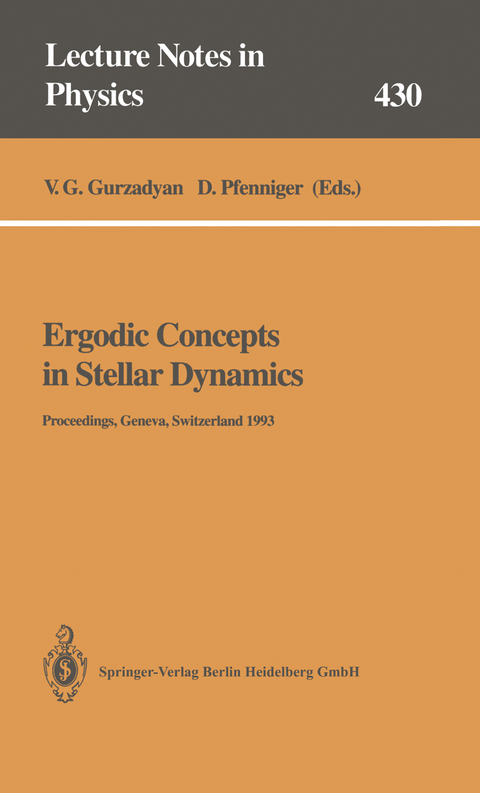
Ergodic Concepts in Stellar Dynamics
Springer Berlin (Verlag)
978-3-662-13986-8 (ISBN)
Structural and dynamical forms of elliptical and dwarf galaxies.- Some clues about the dynamics of globular clusters from high-resolution observation.- Diffusion of stellar orbits in the galactic disk.- Ergodic methods in stellar dynamics.- On a notion of weak stability and its relevance for celestial mechanics and molecular dynamics.- Recent developments in the dynamics of nonlinear Hamiltonian systems with many degrees of freedom.- Numerical exploration of the circular billiard with gravity.- Ergodicity and mixing in gravitating systems.- Chaotic itineracy and clustered motion in globally coupled symplectic map system.- Lyapunov analysis of stable chaos in self-gravitating many body systems.- Stability of the modified Konishi-Kaneko system.- Mixing transformations of N particles conserving almost all classical integrals.- Symplectic integration without roundoff error.- Discreteness noise versus force errors in N-body simulations.- Core motions and global chaotic oscillations.- N-body systems: Computer image and reality.- The approach to integrability in N-body systems with a central point mass.- On the non-trivial concept of relaxation in N-body systems.- Gravothermal oscillations.- Recent results on the stability of anisotropic stellar systems.- The stability of the solar system.- The one-dimensional three-body problem: Numerical simulations.- Order and chaos in "collisionless" numerical simulations.- On the permissible percentage of chaotic orbits in various morphological types of galaxies.- Minimum energy states of a self-gravitating system.- Effective collision term induced by coarse-graining.- Theoretical and numerical investigation of the stability of flattened galaxies.- The evolution of orbits in the stellar disk as a purely discontinuous random process.-Interacting spherical stellar systems.- How faithful are n-body simulations of disc galaxies? - artificial suppression of stellar dynamical instabilities.- SPH simulations of the gas flow in normal spiral galaxies.- Regular orbits and cantori in the potential of the barred galaxy NGC 936.- The role of stochastic motion in a central field with a bar-like perturbation.- A hierarchical model of patchy-structured galaxies and evolutionary processes.- Evolution of clusters of galaxies.- Smoothing of the cosmic background radiation by multiple gravitational scattering.- Angular momentum of galaxies within the local supercluster.- 10 problems the solutions of which can seriously influence stellar dynamics.- Comments on "10 key problems".
| Erscheint lt. Verlag | 20.11.2013 |
|---|---|
| Reihe/Serie | Lecture Notes in Physics |
| Zusatzinfo | XVI, 302 p. |
| Verlagsort | Berlin |
| Sprache | englisch |
| Maße | 155 x 235 mm |
| Gewicht | 492 g |
| Themenwelt | Mathematik / Informatik ► Informatik ► Theorie / Studium |
| Naturwissenschaften ► Physik / Astronomie ► Theoretische Physik | |
| Naturwissenschaften ► Physik / Astronomie ► Thermodynamik | |
| Schlagworte | Analysis • computer simulation • Computersimulationen • Computer simulations • ergodic theory • ergodische Theorie • N-Body Problem • N-Körperproblem • Relaxation • Stellar dynamics • Stellardynamik • telescope • Three-body problem |
| ISBN-10 | 3-662-13986-3 / 3662139863 |
| ISBN-13 | 978-3-662-13986-8 / 9783662139868 |
| Zustand | Neuware |
| Haben Sie eine Frage zum Produkt? |
aus dem Bereich


